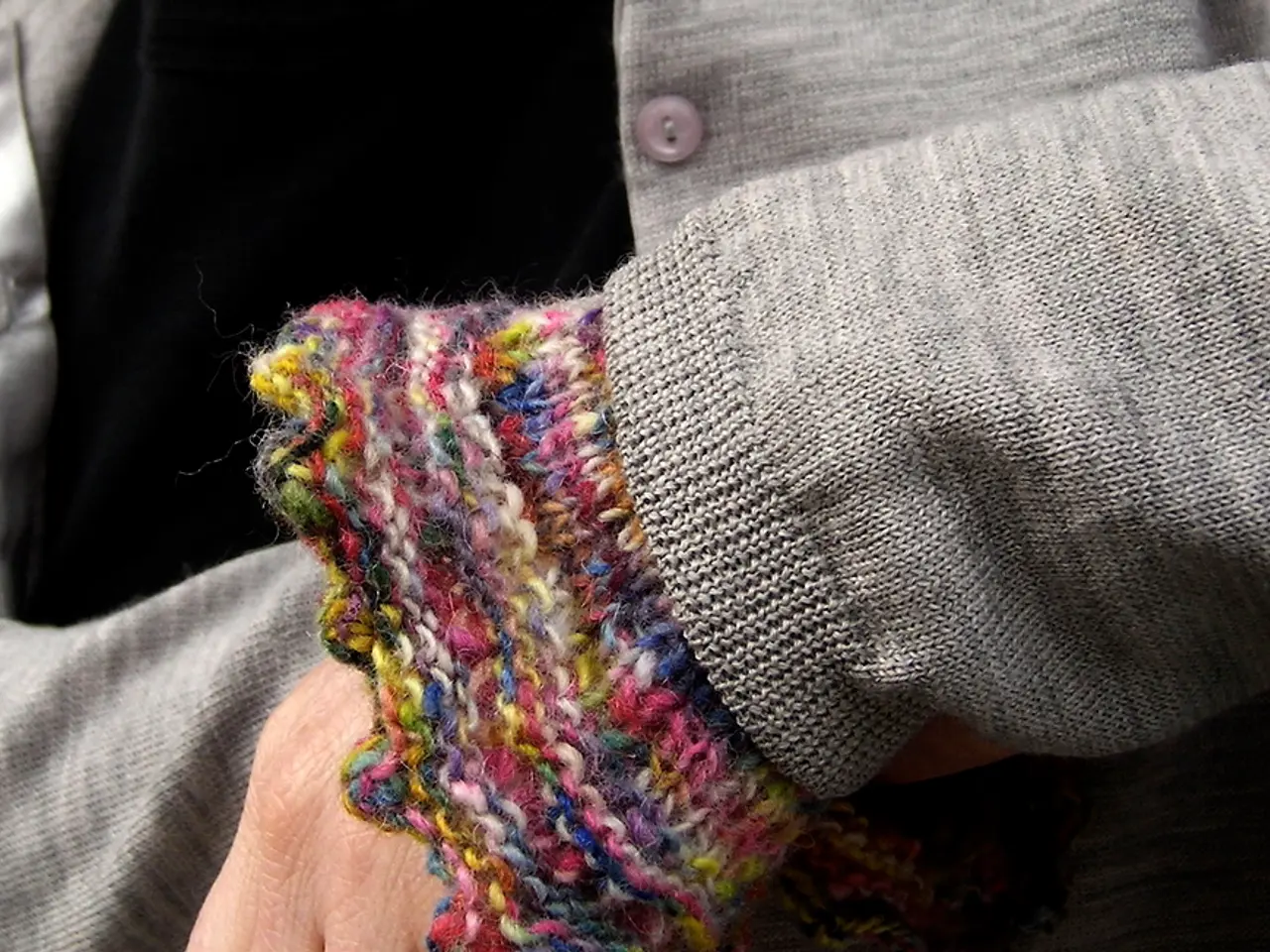Connection between Hidradenitis Suppurativa and Alopecia Areata: An Examination
In the world of autoimmune and inflammatory skin conditions, Hidradenitis Suppurativa (HS) and Alopecia Areata (AA) share some intriguing connections. Both conditions, though distinct, exhibit similarities in their immune system involvement and effects on hair follicles.
HS, a chronic inflammatory skin disease, is characterised by painful nodules, often found in intertriginous areas. On the other hand, AA is an autoimmune disorder that causes hair loss through an immune attack on hair follicles.
Both HS and AA share features related to immune dysregulation and inflammation. Genetic studies suggest HS has significant genetic correlations with other inflammatory and autoimmune diseases, such as rheumatoid arthritis and inflammatory bowel disease, supporting its autoimmune or autoinflammatory nature. Similarly, AA is a well-recognised autoimmune disease with immune-mediated destruction of hair follicles.
Vitamin D deficiency has been implicated in the pathogenesis of both HS and AA. While direct causal links remain under investigation, vitamin D, with its immunomodulatory roles, may contribute to the chronic inflammatory state seen in these conditions.
The connection between HS and AA is primarily through shared autoimmune/inflammatory mechanisms and possible vitamin D-related immune modulation. Both diseases exemplify the complex interplay of genetics, immune dysfunction, and environmental factors in autoimmune dermatologic conditions.
Alopecia Areata presents with a single symptom: hair loss that can worsen over time. In contrast, HS typically follows a progression from skin discomfort, nodules, abscesses, and potential complications such as skin infections, anxiety, depression, pain, itchiness, increased risk of squamous cell carcinoma, and the development of deep tunnels under the skin.
Interestingly, a person living with either HS or AA has a higher risk of developing the other. Treatment plans for both conditions often include a focus on mental health, such as treatments for depression or anxiety.
While the precise molecular connections and shared genetic loci between HS and AA specifically remain under research, ongoing therapeutic overlaps are evident. JAK inhibitors, for instance, show efficacy in both diseases.
For AA, treatment options may include corticosteroid injections, minoxidil, anthralin, creams with corticosteroids, wigs, extensions, false eyebrows or lashes, oral corticosteroids, methotrexate, topical immunotherapy, and JAK inhibitors.
HS treatment may include biologics like adalimumab (Humira), various medications, in-office procedures, and a focus on mental health.
A review of studies from 2019 suggested that some people living with both HS and AA may have a vitamin D deficiency. As research continues, a better understanding of these conditions and their connections may lead to more effective treatment strategies.
- The world of autoimmune and inflammatory skin conditions includes Hidradenitis Suppurativa (HS) and Alopecia Areata (AA), both of which exhibit immune system involvement and effects on hair follicles.
- HS is an inflammatory skin disease characterized by painful nodules and is linked with other autoimmune and inflammatory diseases, while AA is an autoimmune disorder causing hair loss.
- Genetic studies indicate a significant correlation between HS and other autoimmune and inflammatory diseases, while AA is well-recognized as an autoimmune disease.
- Both HS and AA have shown potential Vitamin D deficiency links in their pathogenesis, though the direct causal relationships are still under investigation.
- Besides sharing autoimmune/inflammatory mechanisms and possible vitamin D-related immune modulation, HS and AA both demonstrate the intricate interplay of genetics, immune dysfunction, and environmental factors in autoimmune dermatologic conditions.
- Alopecia Areata and HS have overlapping treatments, such as JAK inhibitors, as well as mental health treatment strategies for anxiety and depression.
- In addition to treatments like corticosteroids, minoxidil, and biologics for AA, research is ongoing to better understand the connections between HS and AA, which may lead to more effective treatment strategies and increased awareness of associated medical-conditions such as neurological-disorders, skin-conditions, and other autoimmune disorders.




